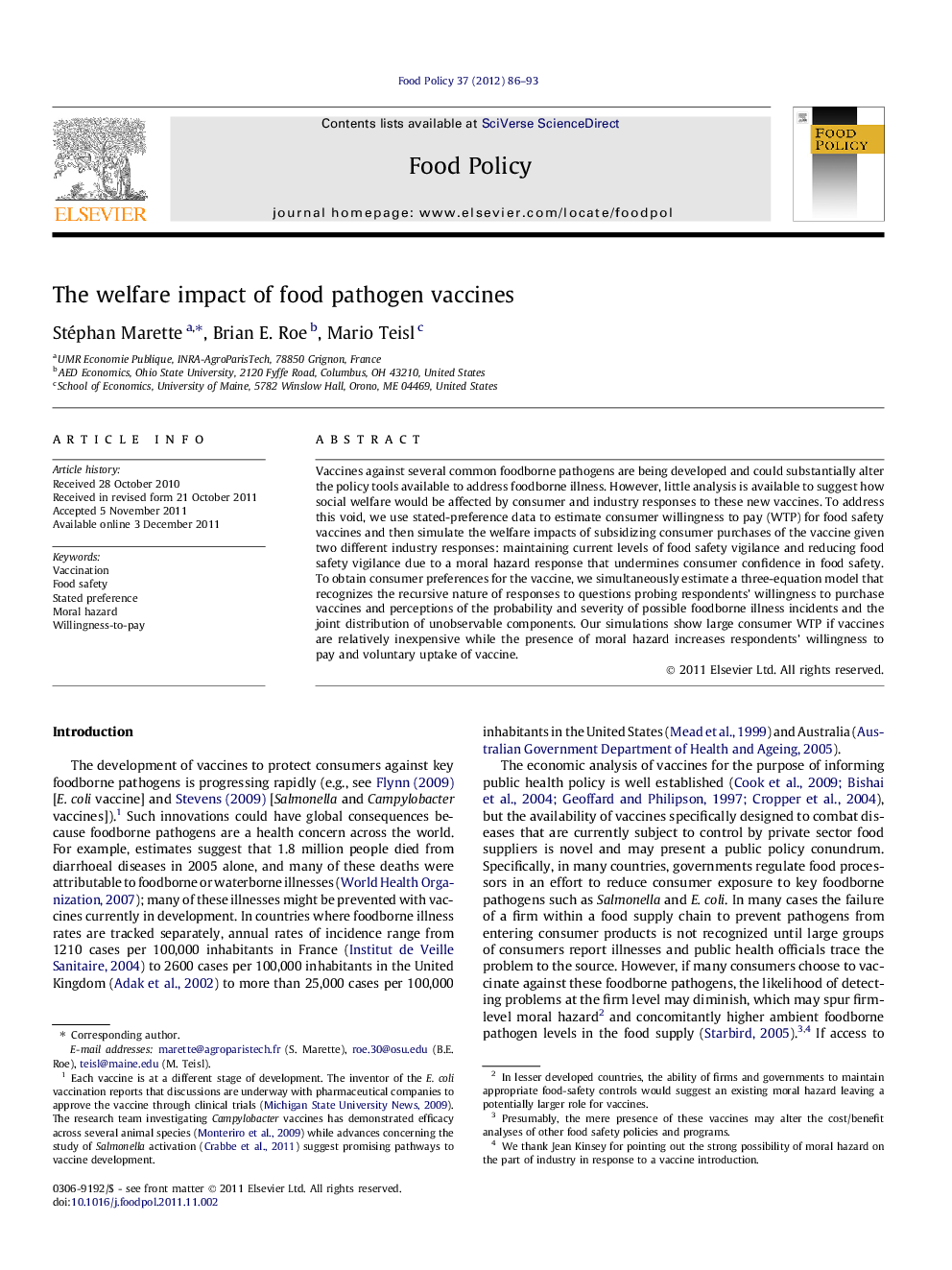| Article ID | Journal | Published Year | Pages | File Type |
|---|---|---|---|---|
| 5070807 | Food Policy | 2012 | 8 Pages |
Vaccines against several common foodborne pathogens are being developed and could substantially alter the policy tools available to address foodborne illness. However, little analysis is available to suggest how social welfare would be affected by consumer and industry responses to these new vaccines. To address this void, we use stated-preference data to estimate consumer willingness to pay (WTP) for food safety vaccines and then simulate the welfare impacts of subsidizing consumer purchases of the vaccine given two different industry responses: maintaining current levels of food safety vigilance and reducing food safety vigilance due to a moral hazard response that undermines consumer confidence in food safety. To obtain consumer preferences for the vaccine, we simultaneously estimate a three-equation model that recognizes the recursive nature of responses to questions probing respondents' willingness to purchase vaccines and perceptions of the probability and severity of possible foodborne illness incidents and the joint distribution of unobservable components. Our simulations show large consumer WTP if vaccines are relatively inexpensive while the presence of moral hazard increases respondents' willingness to pay and voluntary uptake of vaccine.
